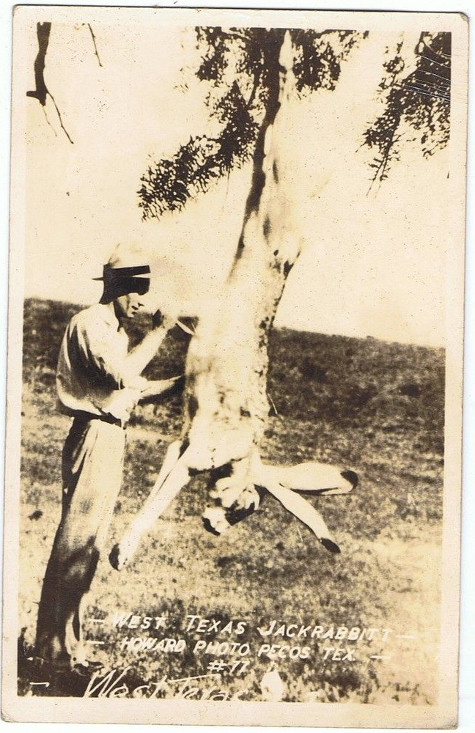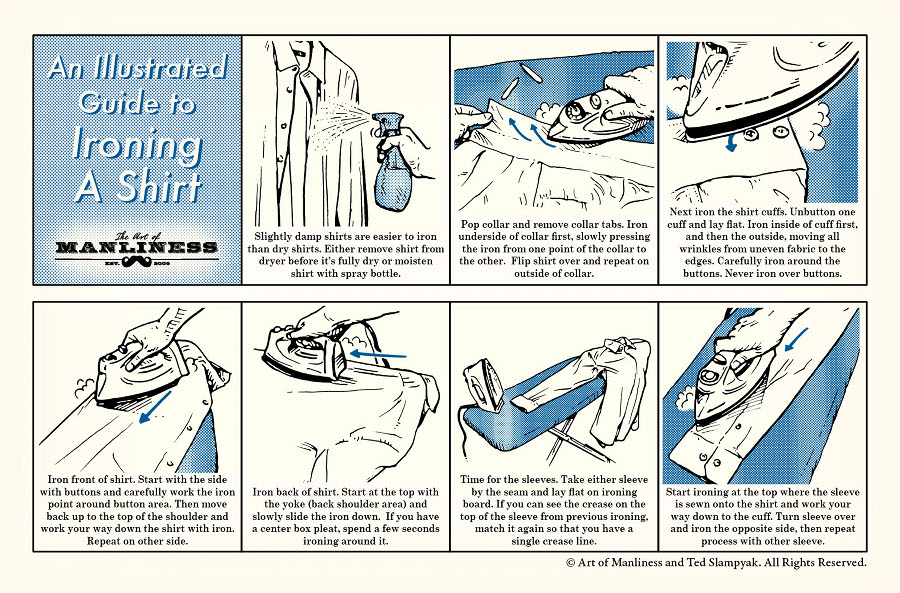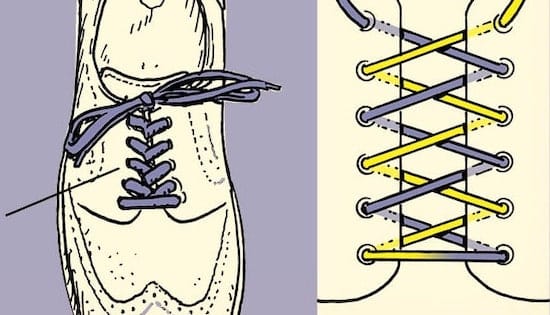
Editor’s note: This is a guest post from Creek Stewart of Willow Haven Outdoor.
**Disclaimer: This post contains a graphic step-by-step depiction of the skinning, slicing, and disemboweling of a real squirrel. If you’re eating, have always felt a deep affinity for woodland creatures, or faint at the sight of dismembered squirrel gonads, please skip this post. Seriously. **
For most reading this article, food is readily available on nearly any street corner. Securing our next meal takes very little thought, effort, and time. The hunter-gatherer spirit inside each of us is slowly vanishing and so are the important self-reliant skills associated with hunting, gathering, and preparing our own food. These skills sustained our ancestors for millennia before us, and now, in our modern society, are almost nonexistent.
But there are no guarantees in life. Our cup may not always runneth over. If the time ever comes when you need to summon the hunter-gatherer spirit inside of you, it is important that you know a few basic skills. One of those skills is how to field dress wild game. In this article I will teach you how to field dress a squirrel.
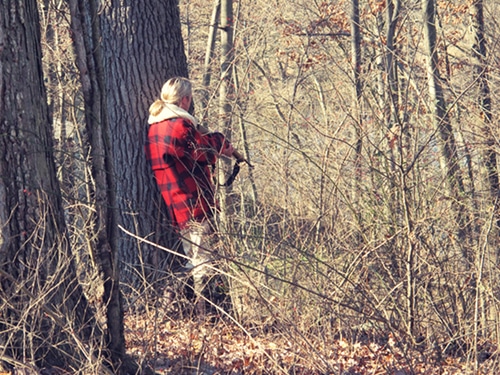
Squirrel is a very viable and practical survival food. If you can find trees, there is a good chance you will also find squirrel. They are easy to find, easy to hunt, and easy to prepare.
First, let me say that there are numerous ways to field dress a squirrel. This is the method I have found to be the cleanest and most efficient. As you will see also, the hide is not destroyed just in case you choose to have it preserved or tanned for future use. With a little practice, you should be able to go from forest to frying pan in under 5 minutes.
As with any similar project, a sharp knife will make this process much more efficient.
How to Field Dress a Squirrel
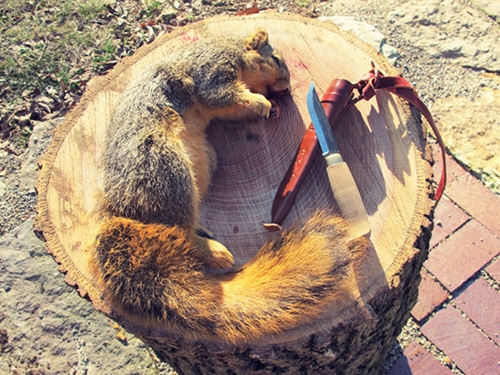
The first step in this very simple process is to turn the squirrel on its belly and cut through the underside of the tail about ½” to 1” from the base.
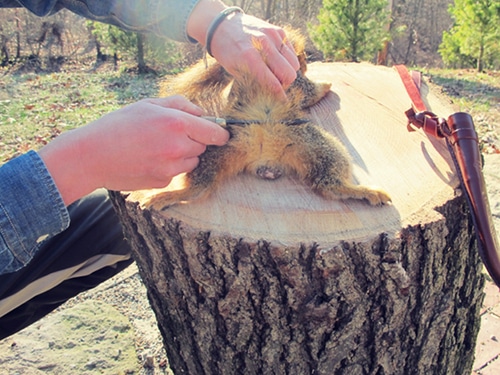
After you’ve cut through the tail, slice through the skin a couple of inches on each side as shown in the photo below.
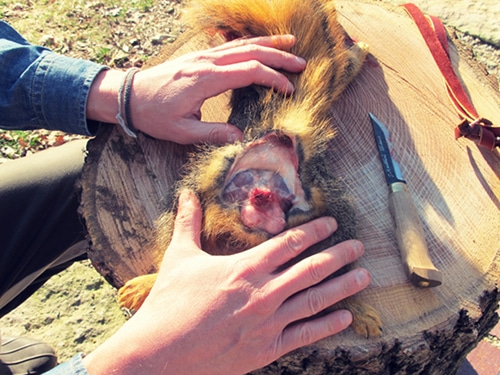
Now, for the part that makes this method so simple. Lay the squirrel down on a solid surface. While holding onto the back legs, step on the tail and skin that you have opened up in the previous step and firmly pull straight up on the back legs. This process will begin to pull the hide from the body. As you are pulling up you will need to work out the back legs. Firmly work your fingers between the muscle and the hide around each leg. This takes a little practice so don’t get frustrated if it feels a little awkward the first time.
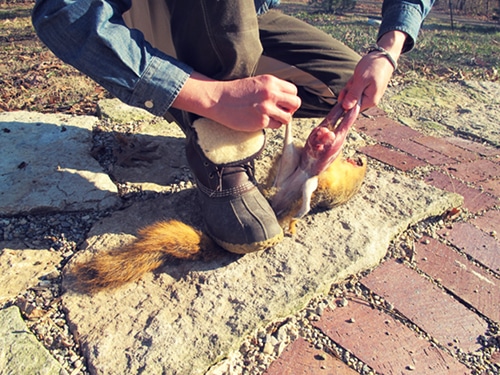
Once you’ve freed the back legs, continue to firmly and steadily pull the back legs straight up.
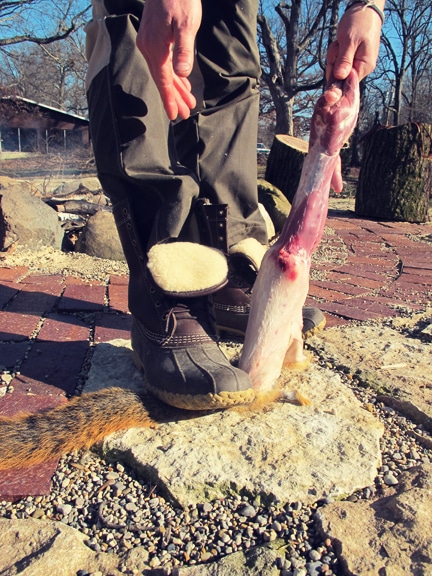
As the hide comes to the front legs you will need to pull them out in the same way as the back legs. Work them out with your fingers and a swift tug will separate the hide from the feet at around what would be considered the “wrist” area.
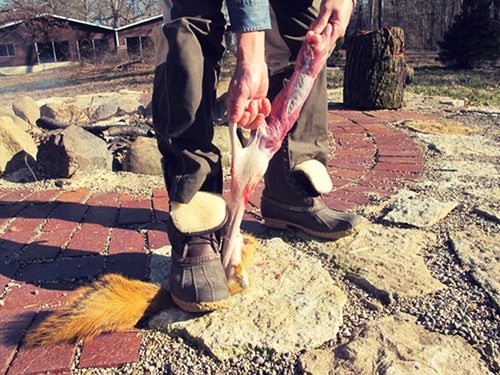
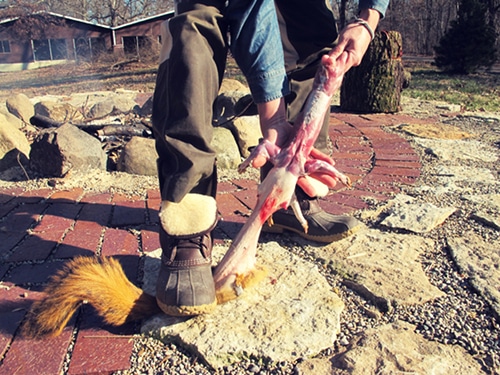
Once both front legs are out, continue to pull the back legs until the hide is up to the head and around the neck. Notice that up until this point my hands are completely clean.
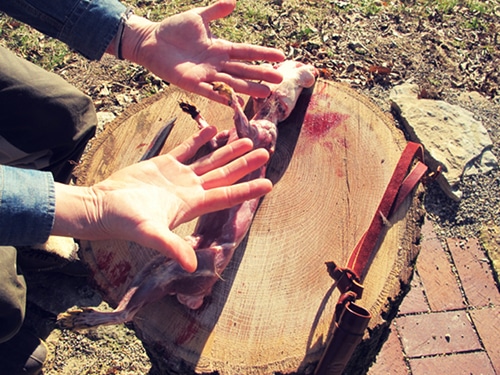
Then, go ahead and cut off the head. I do this by slicing through the meat around the neck and then snapping the bone with my hands. I don’t recommend cutting through bone with your knife. It dulls your knife and also creates little shards of bone in your meat. I use the same process around the “ankles” and “wrists.” You can also trim the feet off at this point too, if you wish (I do that later).
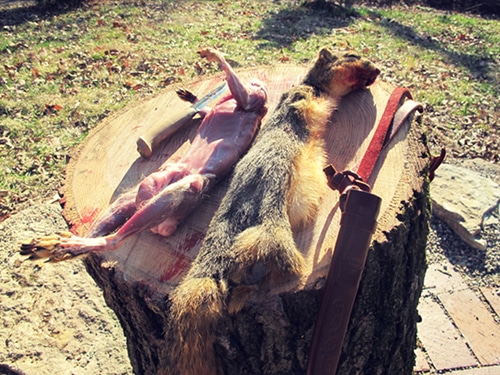
Now, it’s time to remove the entrails. This is a very simple process. Simply pinch the stomach and make a small slit with your knife to open up the body cavity. Note: With male squirrels like this one, you will need to trim back the penis and gonads.

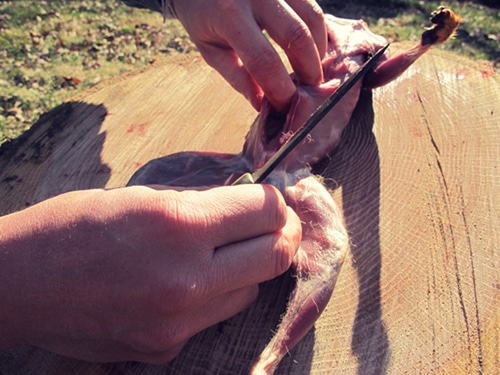
Now, insert two fingers into the slit and run your knife between them (cutting edge up) toward the neck of the squirrel. Doing it this way gives a little clearance so that your knife doesn’t accidentally penetrate any of the entrails such as the bowels or bladder. Cutting open the bowels or bladder can taint your meat so be very careful with this step. It is very easy when gliding the knife between your fingers. Continue this motion through the center of the rib cage all the way through the neck.

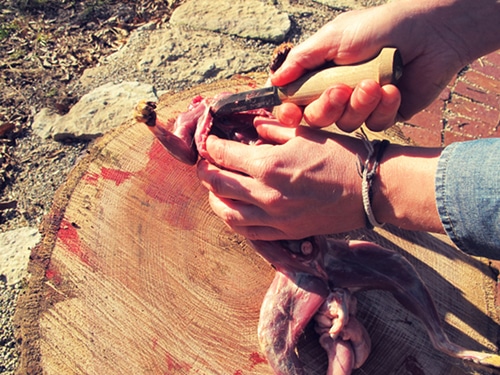
Then, simply split the pelvic bone in the center to open up the entire middle of the squirrel. You can easily do this with your knife.
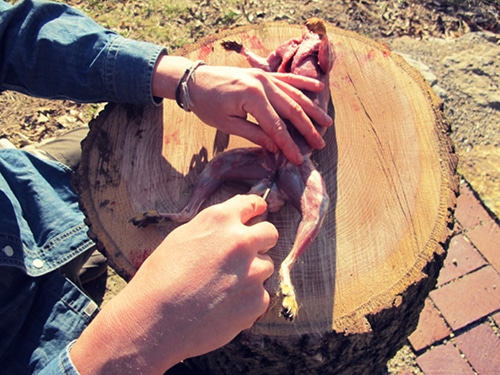
Finally, it’s time to remove the entrails. There is a membrane that encases the chest cavity. By sweeping two fingers from the neck down and catching this membrane you can pull everything out in one fluid motion.
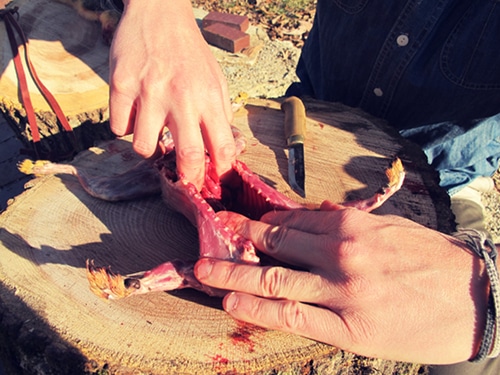
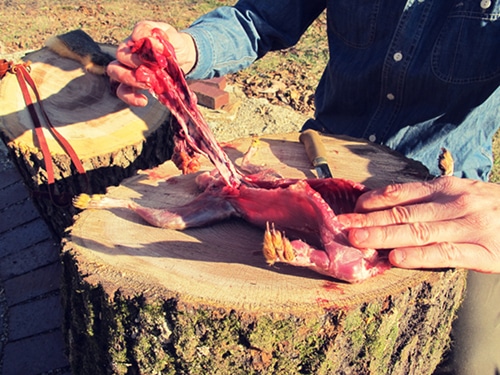
Don’t toss everything out just yet, though. I always inspect the liver to make sure it looks nice and healthy. The liver should always be a rich, deep, solid red color. An off-color or spotted liver might be an indication that the animal has some health problems–in which case I would recommend not eating it. This liver looks absolutely perfect–a sign of a very healthy squirrel.

I then slice around the “ankles” and “wrists” with my knife and snap off the feet just like you would imagine breaking a pencil in half. I keep the heart and liver to prepare with the rest of the squirrel and discard the other entrails. I now have a perfectly dressed squirrel that can be prepared to eat in a variety of ways. On this day, I decided on an open flame spit-roast.
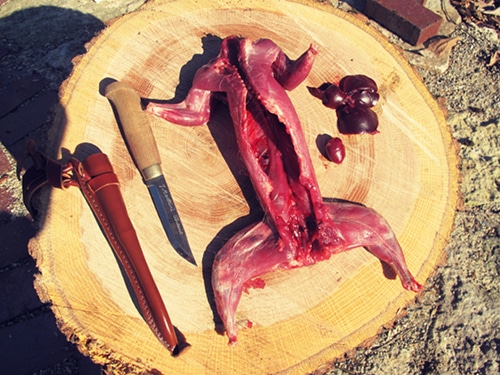


If you’ve never field dressed a squirrel before, don’t get frustrated if you run into a few hiccups. As with most life skills worth learning, it takes a little practice. For those of you who might be interested, I shot this squirrel with a Ruger 10/22 rifle and the knife used is a Marttiini Lynx Lumberjack.
Remember, it’s not IF but WHEN,
Creek
_______________________________
Creek Stewart is a Senior Instructor at the Willow Haven Outdoor School for Survival, Preparedness & Bushcraft. Creek’s passion is teaching, sharing, and preserving outdoor living and survival skills. Creek is also the author of the book Build the Perfect Bug Out Bag: Your 72-Hour Disaster Survival Kit. For more information, visit Willowhaven Outdoor.


